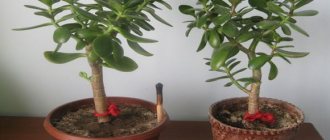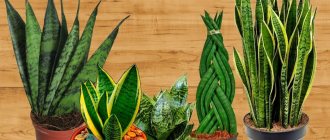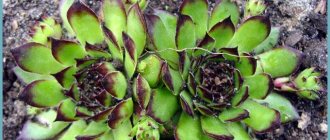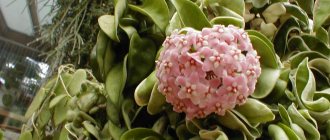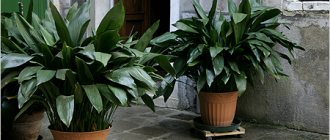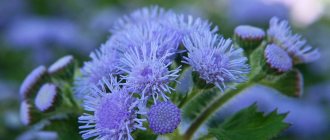The earth's flora is rich and diverse. Among the usual trees, shrubs, and herbs growing in certain natural areas, there are special plants that differ in appearance and method of survival in dry times. This group of evergreen, fleshy, long-lived plants was called succulents, which means they have the ability to store moisture in their tissues. A sufficiently developed shell and a slow evaporation process during the day ensure the preservation of water in the swollen leaves and stems.
Succulents - outdoor perennials
Only plants with special tissues capable of storing water can survive in regions with difficult, dry climate conditions. People have learned to grow succulents in a favorable home environment. Succulents on the street are still used as exotic decoration. The bright flowers of cacti and their unusual-looking fleshy leaves decorate and enliven sunny gardens. Unusual potted compositions, skillfully composed of different types of succulents, began to appear on the streets more often.
Potted arrangements outdoors
Levisia
Among succulents, a low bush strewn with large, ball-like inflorescences occupies a special place. This is Levisia. The plant is characterized by its resemblance to a living bouquet. A combination of numerous colors and shades came together in a small drought-tolerant bush.
Rejuvenated
The young flower is an ideal succulent for creating alpine slides and their lower tier. During flowering, it especially looks like a thornless cactus that accidentally ended up in the middle zone. Growing young and propagating an exotic plant is not difficult; it can take root in any soil, even without roots.
Bacopa
Ampelous bacopa, grown in hanging baskets, looks original in street design. Its unusualness is expressed in small leaves and flowers of different colors (blue, white, pink). These creeping succulents are able to form a root system wherever its shoots come into contact with the soil. A wonderful combination of colors and shapes is obtained in the vicinity of other flowering plants. Here you can experiment as much as you like.
Dorotheanthus
This miniature South African plant has become a characteristic feature of garden decoration. Succulents in the garden in the form of this bush transform the area with bright flowers and unusual-looking shoots. Many flower growers have chosen this species, similar to the usual daisies, which begins flowering in June and ends in mid-autumn. Such a long flowering period is possible with proper care. Tinted green leaves covered with shiny fibers, multi-colored and even two-color buds emphasize the unusualness of the flower stalks.
Apthenia
The South African and South American continents gave another evergreen plant called athenia. The peculiarity is expressed in the name, which in Greek means that athenia blooms at noon. The name is true. The fleshy leaves are bright green, wedge-shaped with smooth edges and have the opposite arrangement. Small round flowers bloom in their axils, shining in all shades of purple.
For your information! When succulents in the countryside finish flowering, seed pods appear in their place.
Delosperma
It stands out among succulents by the appearance of unusual salt crystals on the green surface, which resembles an ice cover on the leaves. Low shrubs are covered with a bright multi-colored scattering of petals during flowering. At home, they grow as perennial succulents; only some species manage to survive the winter in country garden plantings.
Delosperma is a representative of the succulent genus
Euphorbia myrtifolia
Gardeners fell in love with milkweed (Euphorbia) for its beauty and undemanding conditions. There are known varieties of annuals and perennials, evergreen bushes and tree-like frost-resistant plantings. Euphorbia, with its decorativeness and originality, contributes to the design of borders and flower beds. It is used in garden or park areas to create a rocky slide or rock garden. Various plants are planted there along with milkweed.
Ragwort
The number of flowering varieties is large, the most numerous among them is the genus Raspberry, numbering about 1200 species. Some of them attract with unusual silver foliage, another part has bright flowers similar to familiar daisies, and the third part best decorates, for example, the shoreline of a country pond. Herbs stand out from the variety of species. Tree-like ragworts (an African species), shrubs, and vines are known.
For your information! Some similarity with watercress gave the plant its name in the Russian manner.
Variety of species
Varieties of outdoor succulents
This group of plants unites different families. Their representatives can be ground cover succulents, herbs, trees and even shrubs. Such types of succulents as vines and epiphytes will look very original; they can become the center of the entire composition. Many of them are beautiful in bloom.
Succulents can be classified according to various characteristics. For gardeners, the conditions in which plants should be grown are of greater importance:
- By interaction with the sun. Partial shade is loved by guernias, ceropegias, stapelias, green Crassulas, haworthias, green-covered gasterias, aloe, and sansevieria. And in a sunny meadow you can plant euphorbia, frithia, lithops, faucaria, pachyphytum, cotyledon, echeveria, sedum, graptoveria.
- By tenacity and growth of the root system. Mixes using hatior are an acceptable option even in small areas. This plant does not interfere with the growth of others, without losing its own attractiveness. And pachyphytum is demanding of the neighborhood in terms of localization - it actively expands during the growth process, so the distance to other plants must be appropriate. The root system of Crassula arachnoid is also quite voluminous; it reacts poorly to closed containers - pots and boxes. In vertical gardening, it is advisable to use rhipsalis, epiphyllum, and sedum.
- Curly . If you plan to design an arch, then it would be ideal to use Tradescantia.
- Tall. A hedge or space zoning is made from hoya (wax ivy).
Succulents can be used to decorate not only the interior of the house, but also its exterior.
When making a choice in favor of one plant or another, you should first consider its location on the site and its care options.
Ground cover or creeping succulents
Gardeners and landscape designers know plants that are called ground cover species. Their essence is that these low-growing and sometimes creeping seedlings actively spread across the area, capturing the territory in a special way. It turns out to be a kind of carpet of creeping succulents.
sedum
Succulents: home care and main types of the family
This flowering beautiful plant came to the middle latitudes, like other succulents, from dry American, African, and Eurasian regions.
Note! In addition to its decorative features, sedum (another name is sedum) is known as a medicinal painkiller that heals burns and wounds. Extracts from sedum juice are widely used in the manufacture of medicines, as well as for culinary purposes.
Survives drought thanks to the natural ability to absorb and retain water in the leaves. The stems of sedum are erect, up to 80 cm high, with inflorescences of different shades and shapes.
Panel of succulents
An interesting idea and original decoration is a wall panel made of succulents. To do this, you will need a frame with a mesh and cells filled with special soil. Plant cushion-shaped or rosette-shaped succulents in the cells in a mosaic pattern - this includes young plants, sedum, echeveria, etc. This is the kind of unusual living picture you will get.
Succulents in a flowerbed
Types of daisies - flowering border perennials
Nature has not deprived areas with arid climates of exotic vegetation. It was there that perennials with fleshy, thick leaves took root. People learned to grow them at home a long time ago, and succulents began to appear in flower beds, although this is still a rare occurrence. But the sunny garden has suitable conditions for cultivation. You can try planting them as annuals in a small area.
Landscape design will only benefit from the presence of voluminous flowerpots with rare plants on the street.
Succulents in a flowerbed
How to create a succulent garden with your own hands at the dacha
Due to inexperience and the noblest motives, one can end up with a flower mess out of a beautiful flower bed. Decisions that arise as a result of an emotional outburst are unacceptable here. Garden succulents will be lost in this confusion, all their beauty will become an unsightly stain.
As in any serious matter, here you need to plan, carefully think through everything, how to lay out the site, what seedlings to prepare.
- You need to prepare several identical specimens for planting, preferably an odd number of each.
- Schematically depict in what places what color spots will be placed.
- While maintaining symmetry, distribute a repeating color tact, that is, you need to draw a flower garden.
- Pay attention to the arrangement of silver-colored plants to give harmony and completeness to the design plan.
Important! If you use flower containers, you should note their large dimensions.
Home grown succulent garden
Succulent flowers - general description of plants
Succulents are a large group of plants that consist of special cells that can accumulate water in large quantities. From Latin, the term “succulentus” is translated as “succulent”, which fully corresponds to such plants.
The succulent group includes many different crops, which often are not even related to each other by family relationship or common origin. And their similar external features are caused by the same climatic growing conditions - rocky terrain and dry weather.
Based on the principle of accumulation of water reserves, succulents are divided into types - leaf and stem. The first type of succulents accumulates moisture in voluminous leaves. The most famous representatives are aloe, haworthia, kalanchoe and young.
The second type is capable of absorbing moisture with a ribbed and slightly thickened stem. The leaves of stem succulents are often small, not thickened, or even transformed into sharp spines. The stems are densely covered with villi or small spines, which protects the plants from being eaten by animals in their natural habitat - in the deserts of America or dry African regions. The most famous among stem succulents are most of the representatives of the Cactus family - carnegia, monzolia, cereus, as well as lithops (stone flowers).
Interesting! Many people are mistaken in thinking that cacti and succulents are the same plants. In fact, all cacti actually belong to the general succulent group, like many other families. But not all succulents are cacti, so the two should not be equated.
Since succulents come from so many different families, it is very difficult to describe their botanical features. Therefore, let’s look at the common features of plants that unite them into one category:
- A succulent is considered to be a plant with high drought-resistant abilities coupled with the ability to accumulate moisture in succulent leaves or stems.
- All succulents come from dry, dusty and hot countries, so frequent rain or heavy watering has a detrimental effect on them.
- Succulent plants are able to develop normally and even bloom when watered only a few times a year.
- A thin waxy coating (cuticle), which appears bluish in the sun, serves as a shield from the scorching sun and improper moisture consumption. Some species that do not have such a covering have densely pubescent stems.
- The protective mechanism of succulents is the death of the aboveground part in the event of prolonged drought and its complete restoration after the appearance of moisture.
- All succulents have very elastic leaves and a ribbed stem, which allows the top layer of the plant not to burst when water accumulates in it.
Succulents for an alpine slide
For example, you can improve your garden in the Moscow region by installing a man-made rock garden. This is a bold action; every flower lover is capable of being original in his own area. Outdoor succulents are used for this purpose. An ideal place would be a well-lit area of the garden. The background will be the facade of the building.
Forest cyclamen and other outdoor species: garden, Kos, mix
However, before you start designing the garden, it won’t hurt to work with special literature and enrich your knowledge about the plant world.
Succulents in the garden: planting and care
Unusually beautiful and easy to care for - this is how succulents are characterized. In any region: in Siberia, the Urals and western regions, the requirements are the same. They need plenty of light, a convenient container or pot to grow in, and minimal care from the grower.
Housing design and public institutions benefit from growing unpretentious flower stalks.
Succulents in open ground: how to winter
Wintering succulents in temperate regions became possible thanks to the passion and resourcefulness of gardeners and flower growers. It was through the efforts of enthusiasts that cacti and other southern representatives of the plant world came into the open ground. Even wintering succulents for the garden have appeared, and agrotechnical methods have been developed for cultivating them in open space.
What soil should I plant in?
As strange as it may sound, you need to grow succulents in open ground in loose, poor, clayey and even rocky soil. Such conditions allow moisture and air to freely penetrate to the roots. Regarding clay soil, experts say that this mineral substrate meets the basic requirements:
- inertia;
- chemical neutrality;
- ability to retain water;
- aeration;
- strength.
Note! River sand, fine gravel, and activated, but not medical, carbon can be used as soil loosening agents.
You should not overfeed succulents; this causes them to bloom less often, the color of the flowers fades, the needles do not develop enough, and the plants lose their survival rate during the wintering period.
Alpine slide in the yard
Fertilizer
Flower growers should not frequently water, feed with black soil and heat succulents in winter. Winter is a time when it is better to leave plants alone and not fertilize them. Excess fertilizer provokes the growth of multiple thinned, weak shoots.
In spring, fertilizing is carried out no more than once a month with low concentration fertilizers. Special mineral supplements can be purchased at flower shops.
Succulents for open ground
The ideal plant for the garden should look beautiful, be drought-resistant and withstand the winter conditions of our climate. That is why gardeners are happy to place succulents in their landscape compositions.
They look most harmonious against the background of stones, but this does not mean that the only place for their use is rocky hills and rockeries.
These charms can become a decoration for a mixed border or act as vertical landscaping, for example, a living picture on the wall.
Sedums (sedums) and young plants (stone roses) have proven themselves best in the garden.
Diseases and pests of succulents
Beautiful, undemanding plants have earned popularity due to their whimsical shapes and ease of care. But they can get sick from improper care, damage by insects or fungi, or rot.
Therefore it is necessary:
- observe the watering and feeding regime;
- Provide the bottom of the planting hole with a drainage mixture;
- there should be a hole at the bottom of the vase;
- propagate vegetatively in spring and summer, keeping the cuttings in the air for several days before planting, thereby protecting against the penetration of parasites into the cut.
The distribution of succulents in gardens and parks is justified. The originality and uniqueness of the natural creation create a good mood, ennobling the area. The main thing is to choose the right types of plants and provide them with proper care.
Compositions from succulents
Duet of succulent + stump. Juveniles can be planted in an old stump or snag. Very stylish and unusual.
A composition of succulents in a flowerpot or flat vessel , in a shell, garden sculpture and other interesting items that match the style of the garden. You can decorate the composition with colored stones or beads.
Create a three-dimensional relief composition ( topiary ) using a frame of a certain shape, for example: an animal figurine, a crescent, a star.
Plant a flowerbed in a specific shape , such as a lizard, using different varieties of juveniles.
Mosaic flowerbed , in which plants are planted in groups, alternating different colors and varieties, forming ornaments and patterns.
Planting and caring for a mini-garden
Succulents are planted freely, at fairly large intervals. This is necessary so that as they grow, they do not interfere with the development of neighboring plants. Cacti can be planted tightly, but it is better to choose an individual small container for each plant.
Prepare pots, materials and tools. Before planting, wash the pot and tray. Used containers and natural elements must be scalded, and the sand must be calcined.
Landing
Steps to take when landing:
- Drainage is placed at the bottom of the container - pebbles, sand, expanded clay and compacted tightly. The drainage layer makes up 15–25% of the pot’s volume, but it can be more if planting is done in a pot without holes.
- Pour in the soil mixture.
- Plants are planted. The root system must be carefully straightened and covered with soil, without filling the root collar. There is no need to water the plants immediately after planting. This should be done after 2-3 days.
- Pour in decorative powder. Small pebbles, expanded clay and coarse sand will not only decorate the composition, but will also protect you from overheating in the bright sun.
- Decorate the garden with large decorative elements.
Care
Miniature plants are not difficult to care for. Compositions of cacti and succulents, with proper planting and proper care, will last unchanged for 2-3 years. The garden must be watered carefully and regularly. It is best to do this from a tray or from a watering can with a sprinkler. It is necessary to direct the stream at large decorative stones so that the water gradually flows onto the soil and does not disturb its structure.
Cactus arrangements require a period of rest in winter. A garden of succulents should be in a brightly lit place in summer, but in winter it is better to move it to partial shade. If direct sunlight rarely enters the mini-garden even in summer, it is better to choose plants that tolerate partial shade well: bearberry, swallowtail, haworthia and green-leaved gasteria.
Despite the optimal selection, the mini-garden of succulents still grows after some time. Transplants and corrections will be required. This is exciting and exciting work. It evokes flights of fancy and develops creative abilities. The mini-kindergarten will delight you for a long time.
3
( 5 ratings, average: 4.20 out of 5)
Back
Planting bulbous plants before winter
MORE
How to care for succulents at home?
In the natural environment, succulents face a series of challenges. The air temperature can rise to 40 degrees.
Solar insolation regularly tests the strength of plant stems and leaves. Prolonged lack of moisture negatively affects the growth rate.
Growing and caring for succulents is not difficult. To do this, it is enough to plant plants in a soil substrate that is as close to natural as possible. Watering should be done once every 2 weeks.
Using nutrient mixtures will help stimulate rapid growth and speed up the flowering process. You can purchase such a filler in specialized flower departments or prepare it yourself.
To do this, just mix a mixture of peat and sand in equal proportions. Large pebbles are used as drainage. It can be placed at the bottom of a flower pot.
Planting and further care should be carried out in early spring. At this time, an increase in the speed of metabolic processes is noted. Thanks to this, succulents can easily tolerate transplantation.
What are leaf succulents?
This type of plant has beautiful leaves, inside of which there is up to 90% moisture. They feel dense to the touch with a deep texture.
Outwardly, they do have some resemblance to decorative roses. The color plates are presented in the form of green, purple or smoky shades.Popular representatives of this species are Crassula and Aloe. Juvenile or “stone rose” is actively used to create rockeries and mixborders.
The process of propagation of succulents
Reproduction of succulents is a rather painstaking, but interesting process. To do this, you can use two methods that allow you to grow a new plant. For this use:
- Seeds;
- Cuttings.
Planting seeds can only be done by experienced professionals. This method of reproduction requires compliance with a number of rules, which includes:
- Properly composed soil substrate;
- Optimal humidity level;
- High-quality lighting;
- Timely watering;
- Fertilizer application.
The seed propagation method allows you to get a new succulent within one year from the moment the seed is planted in an earthen substrate. Agree that such a process requires a certain endurance and perseverance.
Cuttings of succulents are the most common method among amateur gardeners. For this, a small part of the plant is used. It is pre-placed in root formation stimulators for one week before planting.
After small roots have appeared on the cut part, it is planted in the soil substrate. The creation of greenhouse conditions will help speed up the rooting process. To do this, just use cling film or a plastic bottle.
How to water succulents at home?
Succulents tolerate long-term drought well. Some species are able to store moisture and nutrients, which they later use in small proportions.
Leaf succulents are able to obtain the necessary nutrition from the air. They absorb moisture particles throughout their entire leaf area. As a result, the number of waterings is noticeably reduced. To accelerate growth, it is necessary to irrigate the soil substrate once a week. In the summer, it increases to 2 times a week.
For irrigation it is necessary to use settled liquid. Tap water is purified throughout the day through filters. Using chlorinated liquid can cause the succulent to discolor and cause it to go dormant.
Morgana sedum in a flower garden with succulents
amazon.com
This plant, like mesembryanthemum, is distinguished by fleshy leaves and creeping stems. Very easy to plant and grow. It can be propagated at any time, with the exception of the flowering period. In order to get a cutting, you need to carefully pinch off a 6-7 cm piece from the main plant and free it from several leaves. Be prepared for a few leaves to come off spontaneously due to their natural fragility.
Next, the cutting is placed directly into the substrate so that at least one lower node is underground. For the plant, choose a soil mixture intended for succulents or ordinary garden soil mixed with coarse sand. The acidity level of the soil should be neutral. You need to feed sedum according to the traditional scheme indicated on the packaging of fertilizer for succulents. Do not fertilize the flower exclusively during the dormant period, which falls in the winter.
- Kings of the Desert - The Ultimate Guide to Succulents. Part two
Have you been planning to start collecting plants for a long time, but you don’t know how to care for them? Start with succulents!

